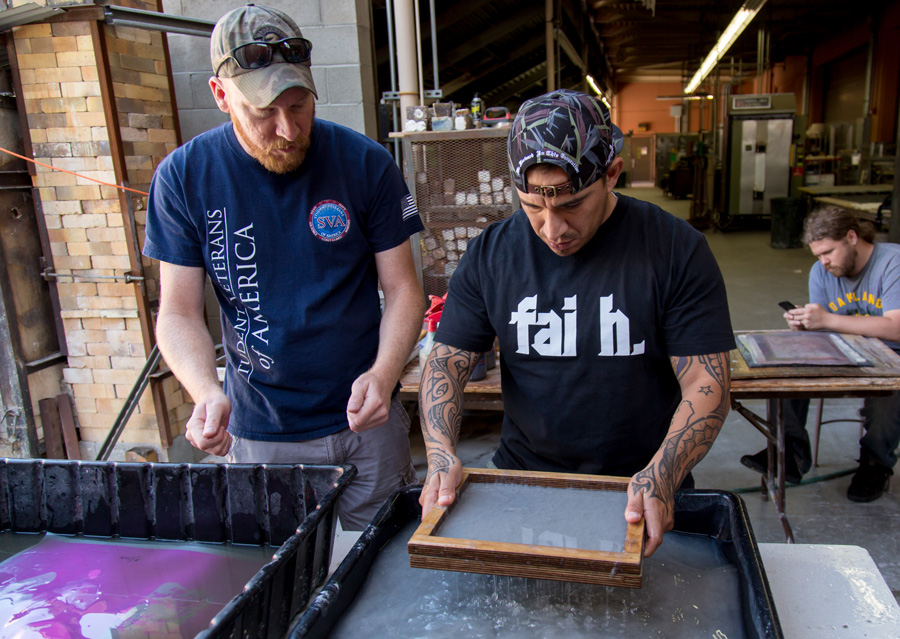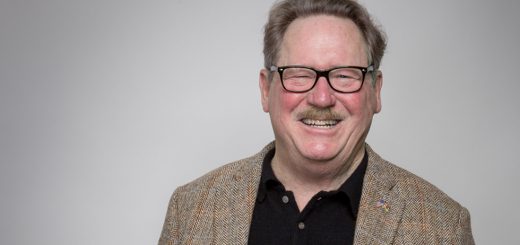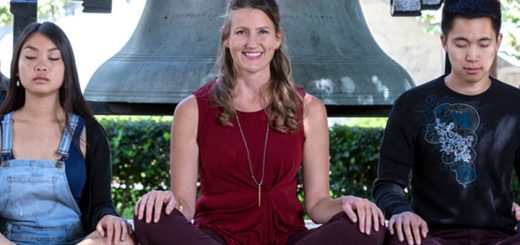Editor’s Perspective: Common Threads
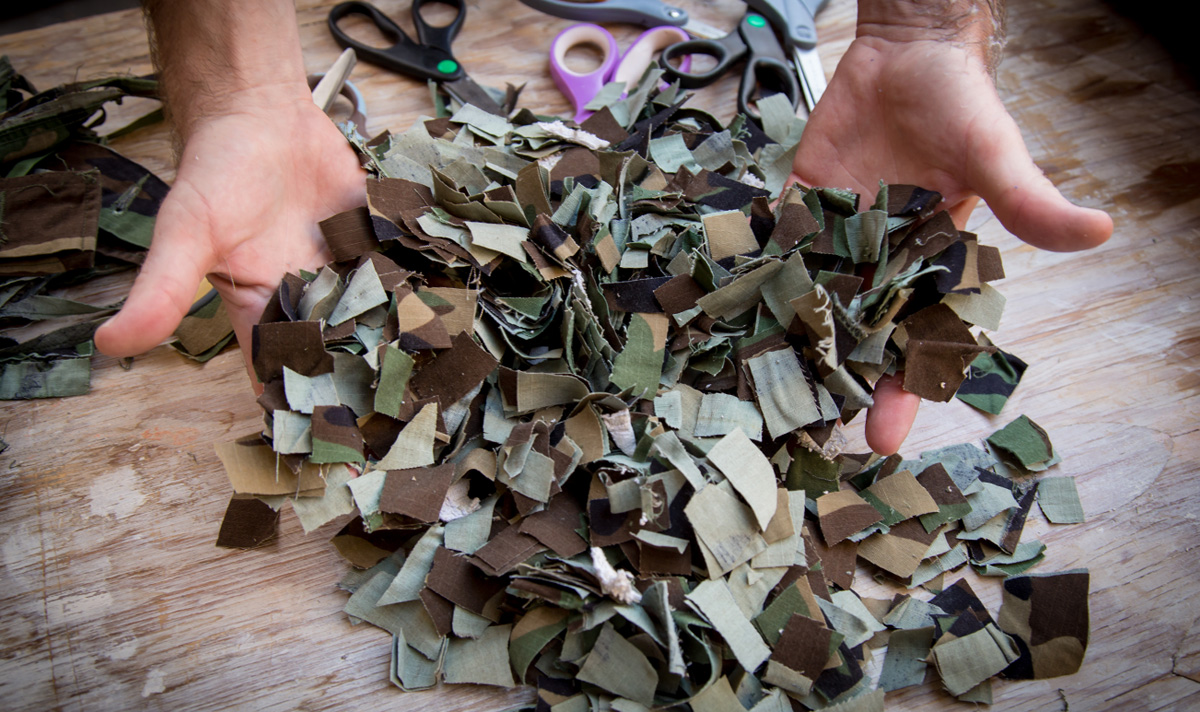
Photo: David Schmitz
For me, the Army was a world of right angles and precisely defined rules. At close inspection, even my uniform’s woodland camouflage fabric had a tiny grid pattern and regulations for how to wear it. Gripping my orange-handled scissors, I was confronted with the uniform’s rigid structure and, unexpectedly, what it represented.
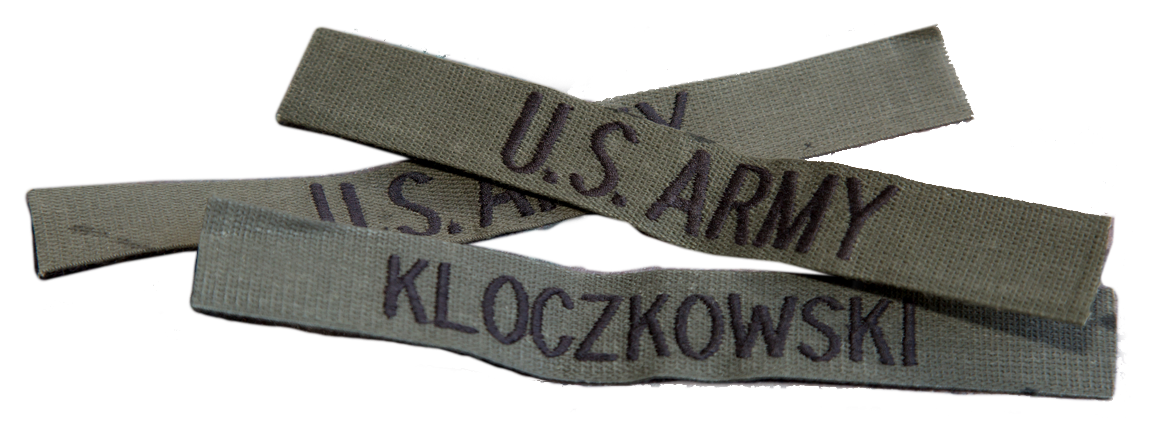
I was preparing to “liberate the fibers” for a Combat Paper Project workshop led by Army veteran and artist Drew Cameron. The project’s purpose: transform military uniforms into handmade paper. The challenge: Could I cut up my uniform, destroying a symbol of my service and the soldier I was?
Earlier that day, I had spoken with some of the other veterans—alumni, students and faculty members—who were participating in the two-day workshop. They, too, had considered the meaning of this exercise. When you break down something you perceive as inviolable, you begin to see what it’s made of, its strengths, its flaws, and you can begin to imagine how it could be different, how it might take on a new shape and purpose.
The ripstop fabric resisted the scissors’ blades. As I dismantled my uniform, gathering postage stamp-size squares into a pile, I thought of where the uniform had been: Washington, D.C., Virginia, Maryland, Delaware, Indiana, Georgia, New York, California, Panama, Honduras, Germany, Macedonia, Kosovo and Greece. I separated the seams and buttons, which couldn’t be used in the paper, and cut away the pockets that had carried notepads, a zippo lighter and letters from friends. When the squares of fabric were churned and pounded to a pulp in Cameron’s Hollander beater, dingy white foam, likely from years of crisply starched creases, billowed up over the sides.
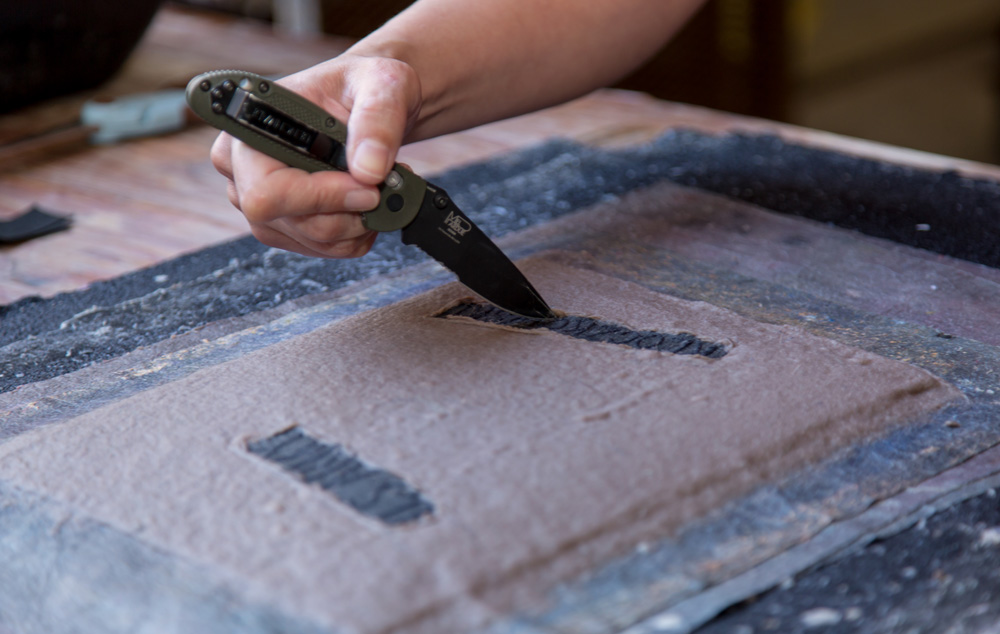
Photo: David Schmitz
After about 90 minutes, my uniform became grey-green pulp that filled a bucket—soft, raw material. When I pulled the dip handmold from the pulpy water, the water spilled over the sides and through the framed screen, leaving behind a wetly formed sheet of paper with imperfect edges and corners. The recast fabric, once dried, became blank sheets of paper, full of possibilities.
“Dress right, dress” is a military command given to align soldiers in a group formation. You align yourself based on the position of other soldiers, forming perfect rows and columns. It’s about looking to others to help you find your place. The Combat Paper workshop was an opportunity for veterans and others interested in the art of papermaking to come together for a common purpose. They helped me to identify and confront a tough obstacle that I didn’t realize existed, and to create a beautifully imperfect solution: thread-flecked paper. In spite of obstacles, it was possible to imagine a new way.

